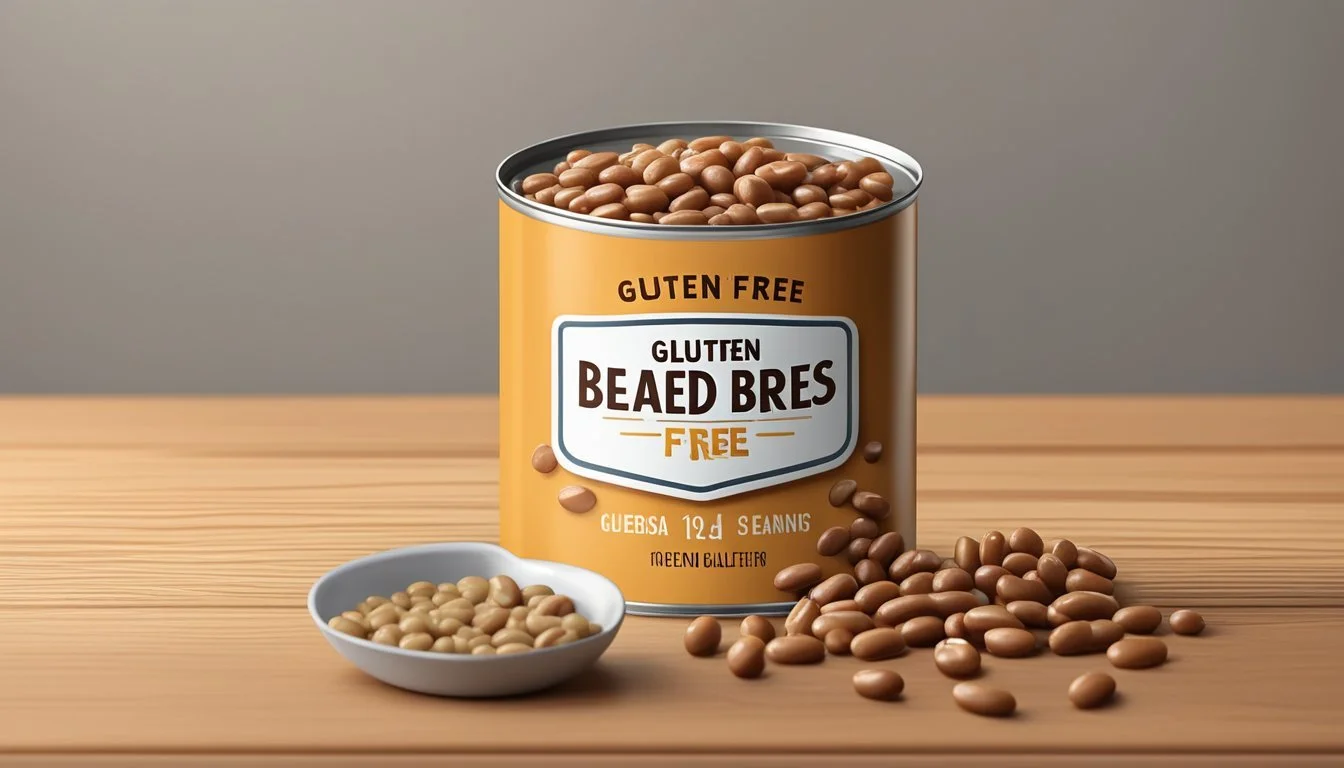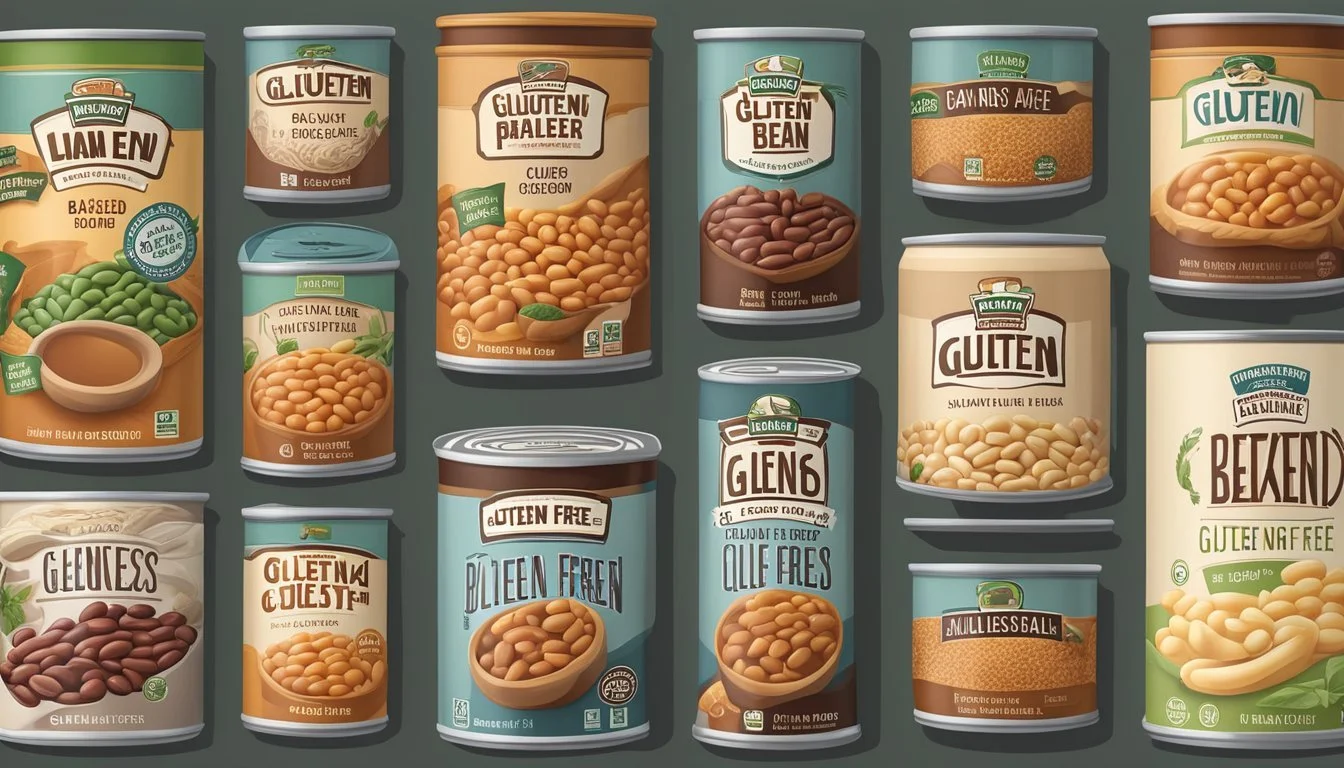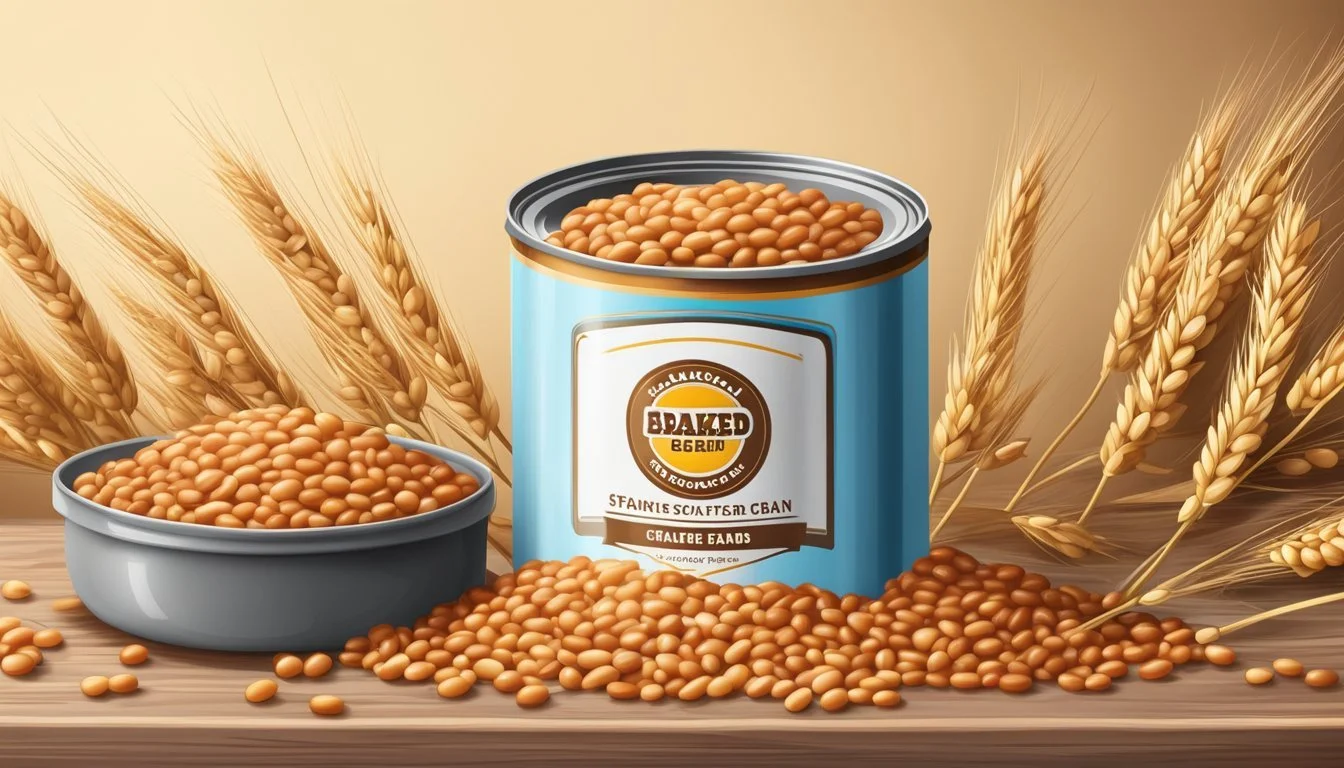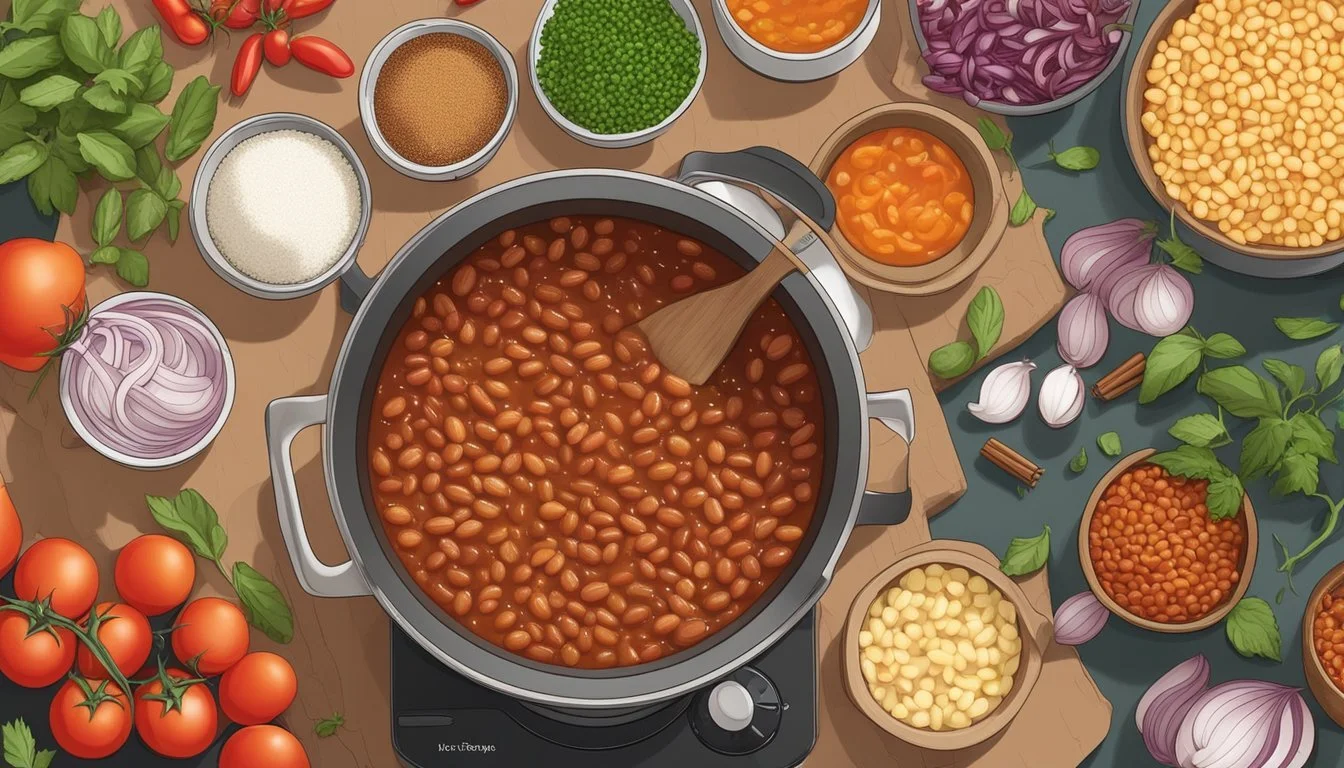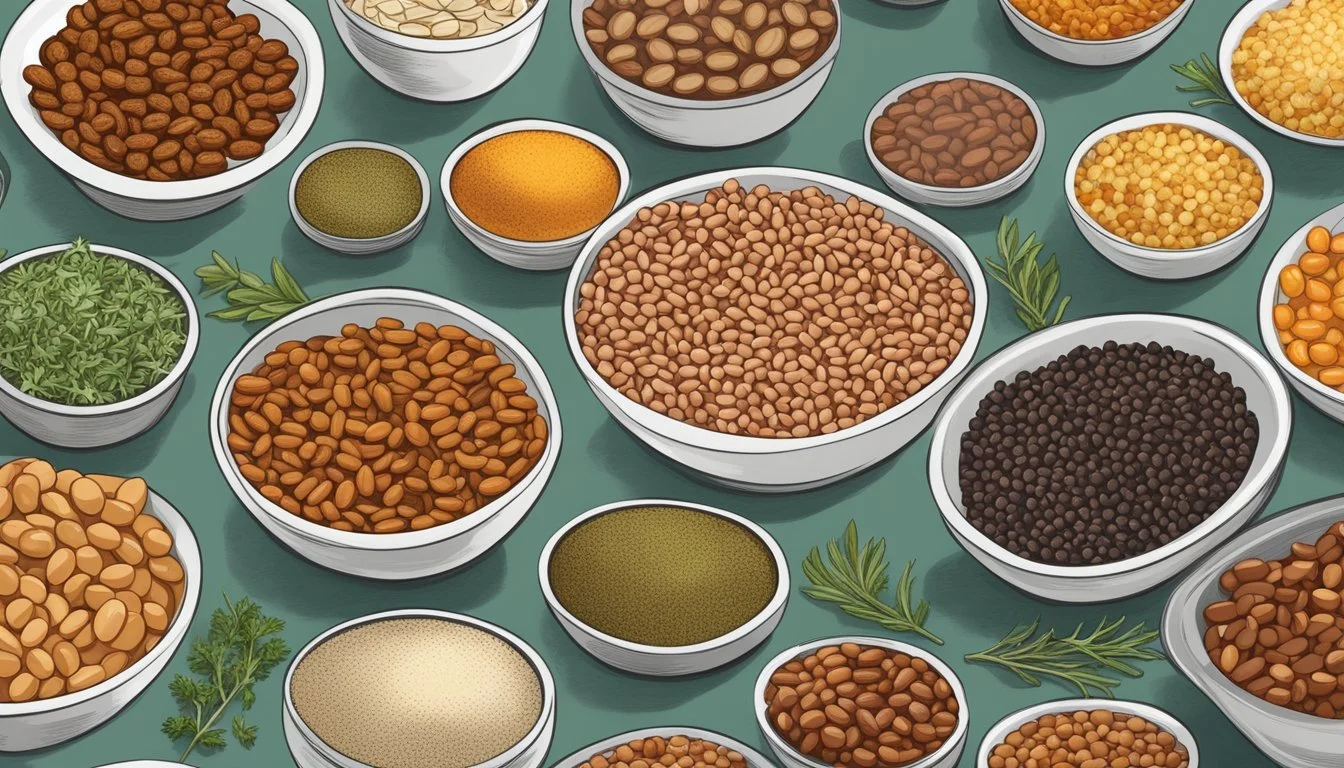Are Baked Beans Gluten-Free?
Understanding Their Ingredients and Preparation
Baked beans are a staple comfort food for many, but for individuals with gluten sensitivities or celiac disease, determining whether they can indulge in this classic dish is crucial. Gluten is a protein found in wheat, barley, and rye, and avoiding it is essential for those who react adversely to these grains. While beans themselves do not contain gluten, the additional ingredients used in the preparation of baked beans can introduce gluten into the final product.
To ensure baked beans are gluten-free, it is important to examine the ingredients list. Additives like vinegar or liquid smoke, flavorings, or thickening agents could harbor gluten. Moreover, cross-contamination during processing and packaging is also a concern. Trustworthy brands that cater to gluten-free diets with their varieties of baked beans include Amy's Kitchen, B&M, and Bush's Best, offering safe options for those avoiding gluten.
When making baked beans at home, controlling the ingredients allows for the creation of a truly gluten-free dish. Using gluten-free alternatives for typical condiments such as Worcestershire sauce or substituting liquid smoke with natural spices achieves the desired flavor profile without including gluten. For those with gluten intolerance, reading labels and being aware of the ingredients ensures that enjoying baked beans doesn't compromise their health.
Understanding Gluten and Celiac Disease
This section provides an in-depth look at gluten, its role in celiac disease, and why recognizing gluten-free foods is critical for managing the condition.
What Is Gluten?
Gluten is a family of proteins found predominantly in wheat, rye, and barley. It acts as a binder, holding food together and giving it a stretchy quality. Gluten is ubiquitous in foods, from breads to dressings, and can even be present in less obvious products like soy sauce and certain seasonings. In the context of baked beans, gluten may be introduced through additives like vinegar or liquid smoke flavoring.
Overview of Celiac Disease
Celiac disease is a serious autoimmune disorder where ingesting gluten leads to damage in the small intestine. When someone with celiac disease consumes gluten, their immune system attacks the small intestine, impeding nutrient absorption. Symptoms can include, but are not limited to, diarrhea, fatigue, and bloating. A strict, lifelong gluten-free diet is the only existing treatment to manage celiac disease and prevent complications. It is crucial for individuals with this condition to avoid any gluten-contaminated foods. There is also a condition known as gluten sensitivity, which results in similar, yet typically less severe, symptoms without the associated intestinal damage.
What Are Baked Beans?
Baked beans are a staple dish commonly found in various cuisines that typically consist of white navy beans immersed in a sauce.
Baked Beans Ingredients
Baked beans traditionally begin with navy beans, also known as haricot beans, which are small, pea-sized beans that are white in color. The sauce that the beans are baked in often includes ingredients like molasses or brown sugar for sweetness, vinegar for a hint of acidity, and mustard or maple syrup for additional layers of flavor.
A classic variation includes pork or bacon which adds a rich, smokey taste, though vegetarian and vegan versions omit these animal products. Instead, these versions may incorporate smoke flavoring to mimic the taste. The beans are slowly cooked, allowing the flavors to meld.
Tomato sauce acts as the base for many baked bean recipes, delivering a tangy tomato flavor. Additionally, a blend of spices and flavorings can be used to enhance the taste profile which varies by recipe or brand.
Are All Baked Beans Gluten-Free?
When considering whether baked beans are gluten-free, one must take into account the potential inclusion of gluten through additives or cross-contamination. Not all baked beans are guaranteed to be gluten-free, thus reading labels carefully is essential.
Understanding Food Labels
When examining food labels, individuals searching for gluten-free options should look for labels that clearly mark the product as gluten-free. These labels indicate that the product has met certain standards to avoid cross-contamination and does not contain gluten ingredients. In the United States, for a product to be labeled gluten-free, it must contain less than 20 parts per million of gluten, which is considered a safe threshold for most people with celiac disease or gluten sensitivity.
Key symbols or phrases to look for on labels include:
The certified gluten-free mark
Phrases such as "No gluten," "Free of gluten," or "Without gluten"
Specific mentions that the product is safe for those with celiac disease
Gluten can be introduced in baked beans during processing or through additives like vinegar or liquid smoke. Therefore, it's crucial to not only rely on the gluten-free claims but also to assess the ingredient list and any allergen statements for mentions of gluten sources.
Gluten-Containing Ingredients to Watch Out For
Certain ingredients commonly found in baked beans can contain gluten. These need careful scrutiny when reading the labels:
Gluten-Containing Ingredients Common Sources of Gluten Wheat Flavors, sauces Barley (malt) Sweeteners, flavor enhancers Rye Rarely used, but possible Hydrolyzed Vegetable Protein (HVP) Unless specified as gluten-free Textured Vegetable Protein (TVP) Derived from soy or wheat Worcestershire sauce May contain barley (malt vinegar)
Additionally, consumers should be aware of terms like "natural flavors" or "spices," as these can sometimes include gluten without explicit mention. It's also important to note that while some brands ensure that all varieties of their baked beans are gluten-free, recipes and manufacturing processes can vary, and what may be gluten-free in one region might not be in another. The lack of a gluten-free label or unclear labeling necessitates further investigation, such as contacting the manufacturer directly to confirm gluten-free status.
Popular Baked Beans Brands and Products
When looking for gluten-free baked beans, it's important to consider the brand, as not all products are created equal. Here are some of the trusted brands that cater to gluten-free dietary needs.
Heinz Baked Beans
Heinz Baked Beans are known globally for their rich tomato sauce and tender navy beans. Heinz does offer some gluten-free options; however, consumers should always check the packaging for the gluten-free label to make certain, as formulations can change.
B&M Baked Beans
B&M Baked Beans pride themselves on their traditional brick oven baking process. They offer a variety of gluten-free baked beans, ensuring a safe choice for those with gluten sensitivities. B&M confirms that all their varieties are gluten-free.
Bush's Best Baked Beans
Bush's Best has a wide range of baked bean products, many of which are gluten-free. They include options like their classic Bush's Best Baked Beans, Barbecue (What wine goes well with barbecue?), and Brown Sugar Hickory. They provide gluten-free choices without compromising on the classic baked bean taste.
Amy's Kitchen Vegetarian Baked Beans
Amy's Kitchen specializes in organic and vegetarian friendly foods. Their baked beans are another great gluten-free alternative. Carefully crafted, Amy's Kitchen caters to those who seek both vegetarian and gluten-free options. All their varieties are free from gluten ingredients.
The Risk of Cross-Contamination
When considering gluten-free diets, the issue of cross-contamination is paramount, particularly for individuals with celiac disease or gluten sensitivity. Cross-contamination refers to the inadvertent transfer of gluten proteins from gluten-containing foods to gluten-free foods. This can occur at multiple stages including processing and packaging.
In the context of baked beans, which are not inherently gluten-containing, the potential for contamination arises during the manufacturing process. Shared equipment with gluten-containing items poses a significant risk. Factories often process a variety of products, and without rigorous cleaning protocols, traces of gluten can contaminate gluten-free offerings.
Packaging is another critical phase where cross-contamination can occur. Gluten traces might be present in the facility or on equipment, inadvertently contaminating beans that are otherwise gluten-free.
Measures to Prevent Cross-Contamination - Use of dedicated gluten-free facilities - Thorough cleaning of equipment - Rigorous testing for gluten presence
Consumers should be vigilant in verifying that the baked beans they purchase are labelled gluten-free and inquire about the manufacturer's protocols to prevent cross-contamination. For those with celiac disease or gluten sensitivity, it is essential to consistently read labels and, when in doubt, contact manufacturers directly to ensure the safety of their food.
Creating Homemade Gluten-Free Baked Beans
Creating homemade gluten-free baked beans is a straightforward process that requires careful ingredient selection and specific baking instructions to ensure the dish is safe for those avoiding gluten.
Selecting the Right Ingredients
One's journey to delicious gluten-free baked beans starts with the selection of beans. Options include:
Navy beans
Pinto beans
Kidney beans
White beans
Black beans
Great Northern beans
Cannellini beans
These beans are inherently gluten-free. The next step involves choosing the right sauce ingredients. Common sauce components for baked beans include:
Ketchup: Verify it is labeled gluten-free.
Mustard: Opt for plain mustards, as they are usually gluten-free.
Brown Sugar: This is gluten-free and adds sweetness.
Apple Cider Vinegar: Gives a tangy touch to the sauce.
Maple Syrup: Provides a natural sweet flavor.
Molasses: Deepens the sweetness and adds color.
Barbecue Sauce: If used, ensure it's a gluten-free variety.
Liquid Smoke: Adds smokiness but check for gluten-free labels.
Worcestershire Sauce: Choose gluten-free Worcestershire sauce as traditional versions may contain gluten.
Spices like cumin, chili powder, and pepper are typically gluten-free but always check labels to be sure.
Gluten-Free Baking Instructions
For the cooking process, here are the key steps:
Prepare the beans: If using canned beans, ensure they are drained and rinsed. For dried beans, follow the soaking and cooking instructions prior to incorporating them into the recipe.
Sautéing: Cook any added ingredients such as bacon, onions, or garlic in a skillet until they are nicely browned.
Assembling the sauce: Combine the gluten-free ketchup, mustard, brown sugar, apple cider vinegar, and maple syrup in the pan with the sautéed items. Season to taste.
Baking: Transfer the bean mixture to an oven-proof dish if not using an oven-proof skillet. Bake in a preheated oven, normally around 325°F to 350°F, for a time frame that allows the beans to thicken and the flavors to meld, typically between 1-3 hours.
An easy-to-follow recipe card with specific measurements, timings, and temperatures can be invaluable for those new to gluten-free cooking.
By adhering to these instructions, one can create a delicious gluten-free baked beans dish that will be a hit at any barbecue or family gathering.
Considering Dietary Restrictions and Variations
When selecting baked beans, consumers with dietary restrictions such as gluten intolerance, veganism, or vegetarianism have a variety of options to consider. It is essential for these individuals to carefully read labels and understand ingredients to align with their dietary needs.
Gluten-Free and Vegan Baked Beans
For those who follow a strict vegan diet, in addition to being gluten-free, it is critical to find baked beans that do not contain any animal products. Many gluten-free baked beans are also vegan, catering to the dietary constraints where no dairy, eggs, or animal-derived flavorings are involved. Brands like Amy’s Kitchen offer gluten-free baked beans which are also vegan, providing a safe option for individuals who prioritize both gluten-free and vegan dietary guidelines. Typically, these products will also be free from other allergens such as soy, tree nuts, and will be lactose-free, further ensuring the safety for a wide range of dietary restrictions.
Key Checklist for Gluten-Free and Vegan Baked Beans:
No animal products (dairy-free, egg-free)
No honey (to ensure vegan compliance)
Free from gluten-containing ingredients like certain flavorings or additives
Gluten-Free and Vegetarian Options
Vegetarian consumers often look for baked beans that are gluten-free but might be more flexible concerning dairy or egg inclusions. Varieties like B&M and Bush’s Best offer options that fit both gluten-free and vegetarian diets. Such vegetarian baked beans typically avoid meat-based flavorings like bacon or lard, which are common in traditional recipes. However, gluten may still be present in the form of additives or flavorings in some brands, making label scrutiny imperative. Some products may also be certified kosher, adding another layer of dietary observance.
Important Considerations for Gluten-Free and Vegetarian Baked Beans:
No meat products or meat-derived flavorings
Dairy or eggs may be present (consumers should verify if seeking dairy-free or lactose-free options)
Kosher certification may be relevant for some vegetarian consumers
By carefully examining the product labeling, those with specific diet preferences can enjoy gluten-free baked beans while adhering to vegan or vegetarian lifestyles.
Where to Find Gluten-Free Baked Beans
Consumers searching for gluten-free baked beans will find a variety of options at local grocery stores. It is important to read labels carefully, as not all canned baked beans are gluten-free.
Grocery Store Aisles:
Health Food Section: Often stocks gluten-free alternatives.
Canned Food Aisle: May carry mainstream brands with gluten-free options.
Trusted Gluten-Free Brands:
Amy's Kitchen: All varieties are certified gluten-free.
B&M: Offers gluten-free varieties.
Bush's Best: Labels its gluten-free canned bean options.
When selecting canned beans, shoppers should look for labels stating the product is gluten-free. Here are ingredients to avoid:
Wheat
Barley
Rye
Malt
Brewer's yeast
Some brands use gluten-containing additives like Worcestershire sauce and liquid smoke flavorings. Therefore, vigilance is needed
Flavor Profiles and Seasoning Alternatives
When customizing baked beans, one may tap into a diverse palette of flavors ranging from sweet and savory to spicy and smoky. The key lies in selecting the right seasonings and ingredients to enhance the natural taste of beans.
Sweet and Savory Varieties
For a sweet and savory twist, ingredients such as molasses and brown sugar are staples. They impart a rich, caramelized sweetness that balances the beans' earthiness.
Molasses: Provides depth with a warm, sweet-bitter profile.
Brown Sugar: Offers a more straightforward sugary touch with a hint of molasses.
Adding maple syrup can introduce a woodsy note to the sweetness, which complements the beans’ natural flavor.
Spicy and Smoked Alternatives
Those craving a spicy kick can incorporate chili powder or cayenne pepper. These spices contribute a sharp heat that contrasts with the beans’ creaminess.
Chili Powder: A blend that delivers spiciness with layers of complexity.
Cayenne Pepper: A pure heat source that should be used sparingly.
For a smoky undertone, hickory smoke flavoring or spices like chipotle powder, which carries both heat and a smoky nuance, can be excellent additions. They evoke the essence of open-fire cooking and bring an intense and robust finish to the dish.
Hickory Smoke: Introduces a traditional barbecue smokiness.
Chipotle Powder: Infuses both smoky and spicy elements simultaneously.
Pairings and Serving Suggestions
When choosing accompaniments for baked beans, one should consider dishes that complement its rich and savory flavor profile. Gluten-free baked beans are versatile and can be served with a variety of foods, enhancing meals from casual barbecues to cozy family dinners.
Complementary Dishes
Baked beans are a classic side dish that pairs exceptionally well with barbecue-centric meals. They are naturally gluten-free, making them a safe choice for those with gluten sensitivities. Here are specific dishes that enhance the experience:
BBQ Ribs: The smokey taste of barbecue ribs (What wine goes well with barbecue ribs?) complements the sweetness of baked beans.
Hot Dogs: Baked beans alongside gluten-free hot dogs create a classic comfort food duo.
Hamburgers: A hearty hamburger served with a side of baked beans offers a satisfying meal.
It's important for individuals with gluten intolerance to ensure that accompanying breads or buns are gluten-free.
Incorporating Baked Beans into Meals
Gluten-free baked beans can be more than just a side; they can be integrated into a variety of meals:
With Rice: Serve them over a bed of rice to create a simple, filling entrée.
In a Casserole: Baked beans can be layered in a casserole with other gluten-free ingredients for a one-dish meal.
As a Hot Dog Topping: Top gluten-free hot dogs with baked beans for added flavor and texture.
When planning a menu, baked beans can be a key component, offering both flair and flexibility to a meal.
Storage and Shelf Life of Baked Beans
Proper Storage Methods:
Pantry: Unopened canned baked beans should be stored in a cool, dry pantry. Avoid exposure to extreme temperature changes.
Refrigerator: Once opened, transfer leftover beans to an airtight container and refrigerate promptly.
Freezer: For long-term preservation, freezing is recommended. Ensure beans are cooled, portioned, and stored in freezer-safe containers.
Shelf Life Considerations:
Storage Location Expected Shelf Life Pantry (Unopened) Up to 2-5 years for canned varieties like original, homestyle, and country style Refrigerator (Opened) 3-4 days in airtight containers Freezer Up to 6 months for best flavor and texture preservation
Tips for Extending Shelf Life:
One should ensure the canned baked beans are not stored in opened metal cans in the refrigerator, as this can increase the likelihood of spoilage and metallic taste. Transferring to a proper storage container can prevent contamination. When freezing, remove as much air as possible from freezer bags or ensure containers are sealed tightly to avoid freezer burn.
To wrap up this segment, keeping baked beans in their best condition involves proper storage and understanding their shelf life. One can enjoy the original flavor of the best beans by adhering to these guidelines, ultimately reducing food waste and maintaining product safety.
Additional Resources and References
For individuals requiring a gluten-free diet, verifying the gluten status of baked beans is critical. Various resources can assist consumers in identifying gluten-free products and understanding label information.
Online Guides and Databases:
The Celiac Disease Foundation offers a comprehensive guide on gluten-free foods.
Coeliac UK has an extensive Food and Drink Guide for identifying safe products.
Food Certification Organizations:
The Gluten Intolerance Group's Gluten-Free Certification Organization (GFCO) provides a list of certified gluten-free products.
Coeliac Australia's Gluten-Free Accreditation Program highlights foods that meet strict gluten-free standards.
Brand-Specific Information:
Bush's Best provides a complete list of their gluten-free baked beans.
Amy’s Kitchen and B&M both offer gluten-free baked bean varieties, confirmed on their respective websites.
Trusted Publications:
Verywell Fit often features articles and product lists for gluten-free food options.
Chef’s Resource is another site that frequently addresses gluten concerns in various food products.
When selecting gluten-free baked beans, consumers are encouraged to look for certified gluten-free labels and to research brands that consistently offer gluten-free options. These resources represent starting points for those looking to include baked beans in their gluten-free diet.

